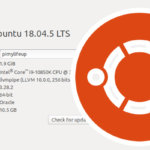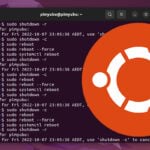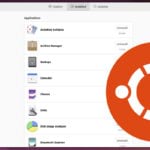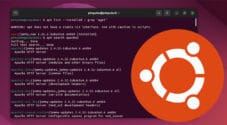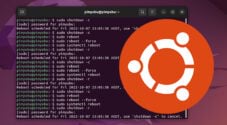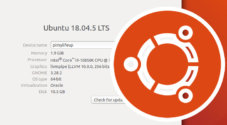In this guide, we will show you how to update the software on the Ubuntu operating system using either the terminal or desktop interface.

Knowing how to update Ubuntu or any operating system is essential.
Updating helps ensure that you are always running the latest software available for your system.
Having an updated system helps ensure that you have the latest security patches, bug fixes, and performance improvements.
Ubuntu, like most operating systems based on Debian, makes use of the apt package manager.
The apt package manager is relatively easy to use and is an excellent thing to learn how to use.
Within the next few sections, you will learn how to update Ubuntu using the command line or desktop interface.
Please note that to update packages on Ubuntu, you will be required to use the root user or have superuser privileges.
Updating Software on Ubuntu using the Terminal
In this section, we will show you how easy it is to update software on the Ubuntu operating system by using the terminal. It is actually significantly simpler than using the desktop as the whole update process can be completed with two very easy to remember commands.
Updating Ubuntu through this method is a straightforward process as there are only two commands you need to know.
If you are on the desktop version of Ubuntu, you can open the terminal by pressing CTRL + ALT + T. You can also perform this update by using an SSH connection to your Ubuntu system.
Updating the Package List
1. Before you can update the software on your Ubuntu system, you need to update the package list cache.
The apt package manager that Ubuntu relies on keeps a cache of all available packages from any configured repository. This cache keeps track of every available piece of software, their latest version, and where that package be downloaded from.
To update the package list of on Ubuntu, all you need to do is use the following command.
sudo apt updateAfter you have run an update on your Ubuntu systems package list, it will now be aware of what packages have newer versions available.
It is important to run this command before you install new packages. If not updated, the package list cache may contain links to mirrors that may no longer be available.
Upgrading the Packages
2. Once the package list cache is updated, Ubuntu will now be aware of the packages that can be updated on your system. It does this by comparing the local version number to the one that sits in the newly updated cache.
To update all of the software installed on your Ubuntu system to the latest release, all you need to do is run the following command within the terminal
By using the “upgrade” command, Ubuntu will be careful to only update software where dependencies haven’t changed.
sudo apt upgradeWhen prompted if you would like to continue with the update operation, type in y, and then press the ENTER key.
Performing a Full Upgrade
3. If a piece of software has been held back on Ubuntu it is typically because that particular piece of software’s dependencies have changed. The package manager avoids updating these just in case the new dependencies introduce issues.
If you aren’t worried about any breakages from occurring, you can force an update of all software by using the command below within the terminal. The key difference here is that we are now using “full-upgrade” instead of just “upgrade“
By using “full-upgrade“, Ubuntu will install new packages to your system if they are required to complete the update.
sudo apt full-upgradeYou will be prompted if you would like to update your Ubuntu systems packages. To confirm the update, type in y, and then press the ENTER key.
Update Ubuntu using the GUI
This section will show you how to use Ubuntu’s desktop interface to perform an update of your system.
While the following screenshots are taken on Ubuntu 20.04, the next steps should work the same on most Ubuntu versions.
You can verify what version of Ubuntu you are using relatively easily.
1. Our first step is to open the activities screen.
The easiest way to open this screen is to click “Activities” in the top left corner of the screen or click the icon located in the bottom left corner.
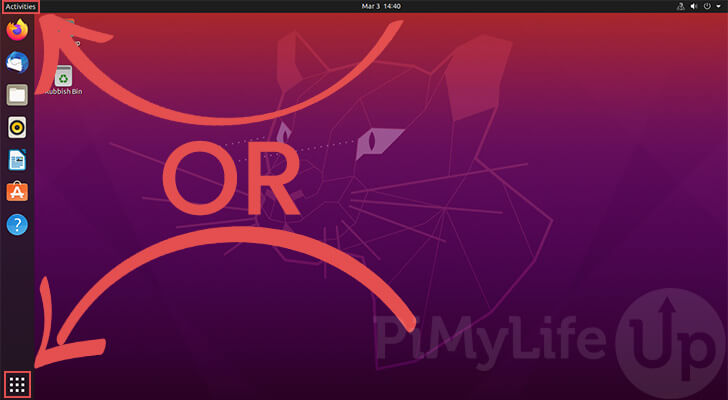
2. Using the search bar on this screen, type in “Software Updater” (1.).
This should end up showing the following result on your activities screen. Click the “Software Updater” application when it appears (2.).
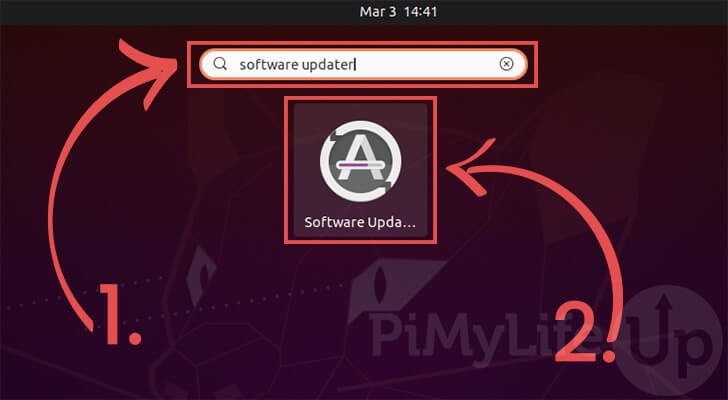
3. The software updater will now begin to perform an initial check for updates.
During this process, it is effectively updating the cached package lists on your Ubuntu device. This is equivalent to using the “sudo apt update” command.
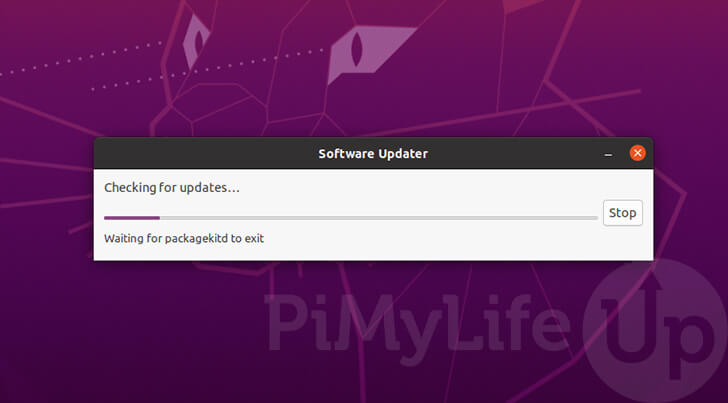
4. After the updater finishes grabbing the latest package lists, you will be notified if there are available updates.
You can update these packages on your Ubuntu operating system by clicking the “Install Now” button on the screen.
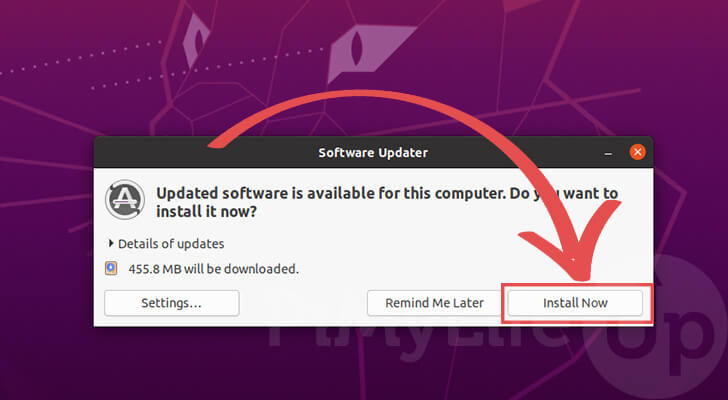
5. To update packages on Ubuntu, you are required to be an administrator.
To authenticate yourself as an admin, start by typing in your user’s password (1.).
Once you have a password typed in, click the “Authenticate” button (2.).
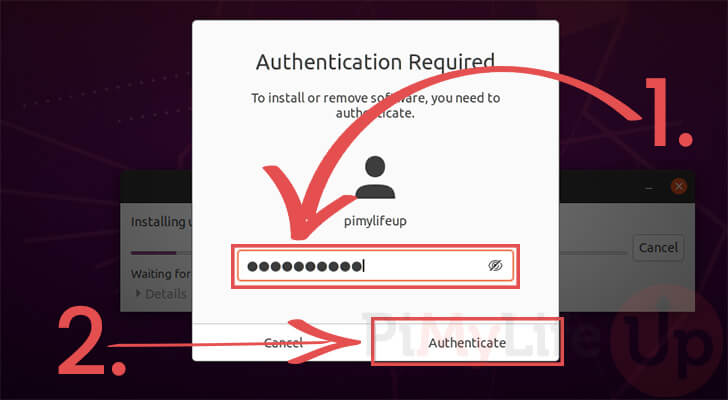
6. Your Ubuntu device will now install any available update that the updated package list shows.
Please note that this process can take some time as it needs to download then install the packages.
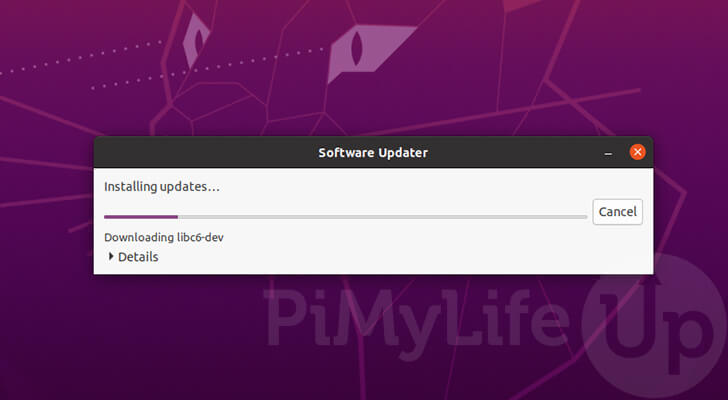
7. Once the packages have been installed on your Ubuntu device, you may need to restart it.
As some packages were in use while the update process has begun, it won’t be until the device is restarted that they are loaded in.
You can restart the Ubuntu device by clicking the “Restart Now” button on the screen.
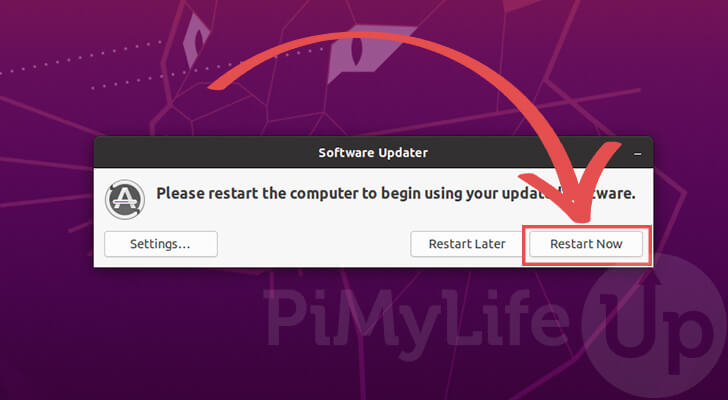
Conclusion
Throughout this guide, you will have learned how you can update your Ubuntu operating system.
When using either the terminal or the GUI, you can update your system with relative ease.
If you have had any issues with updating your Ubuntu system, please leave a comment below.
You can check out our other Ubuntu guides to learn what else you can do with the operating system.
